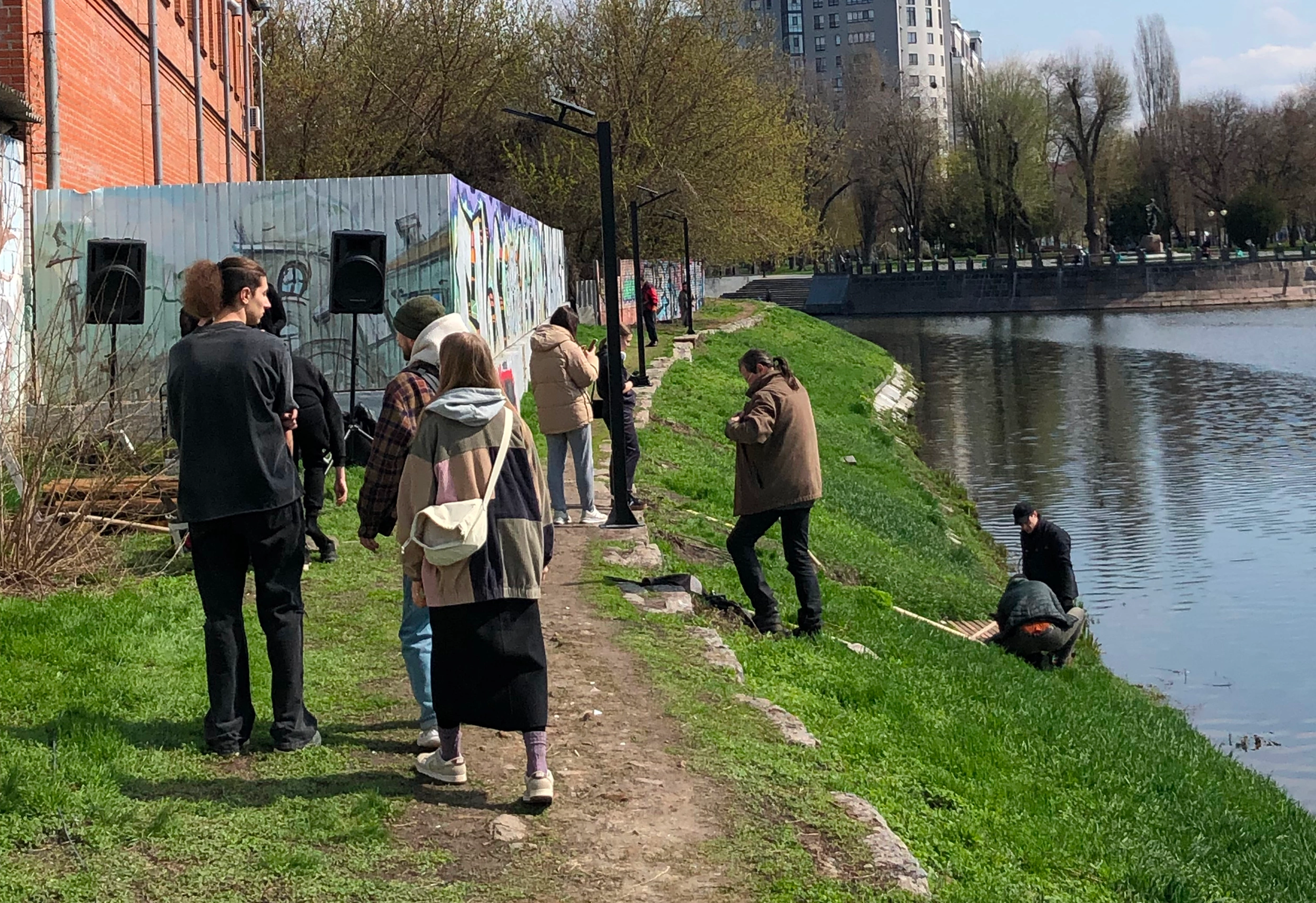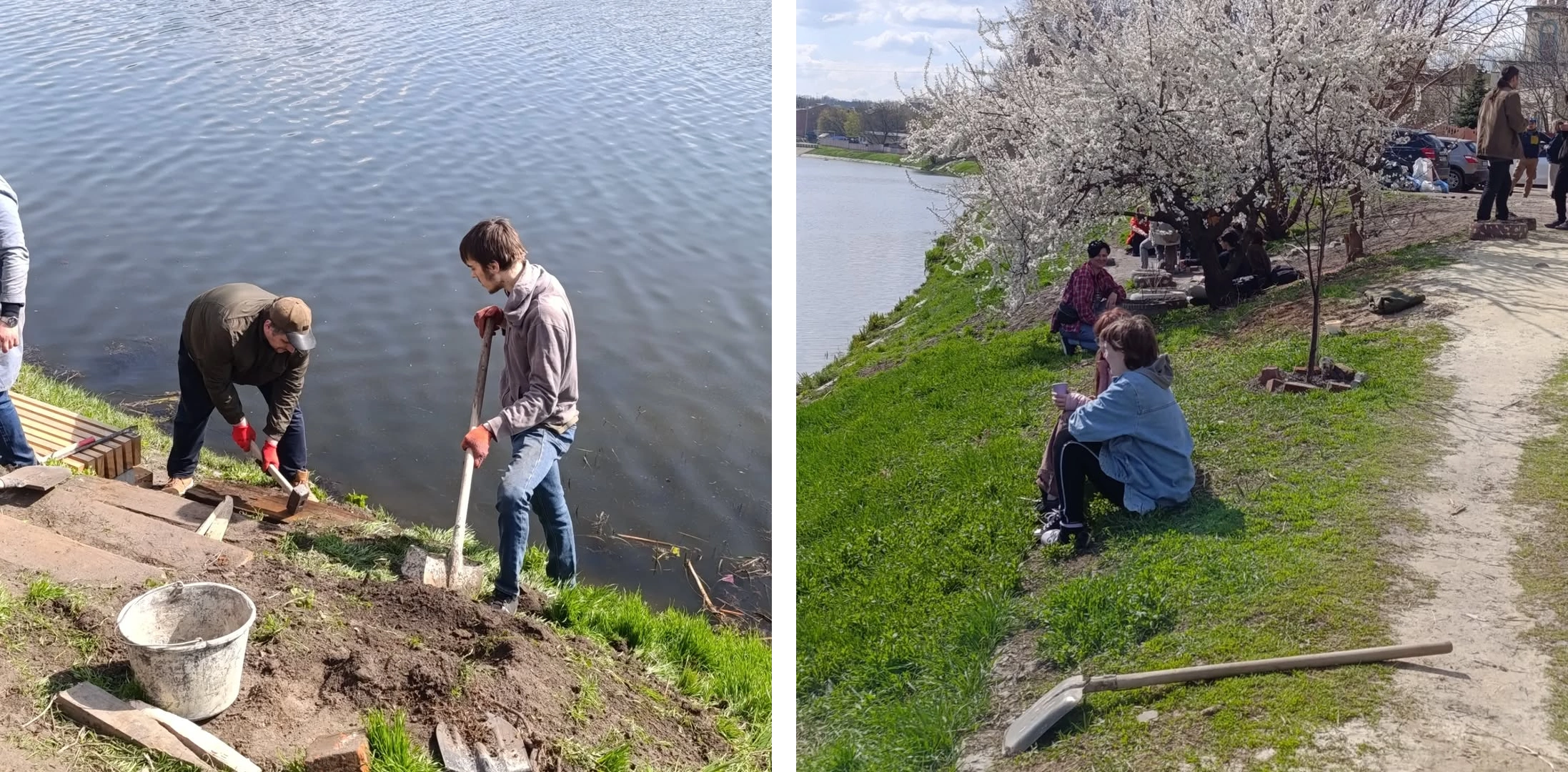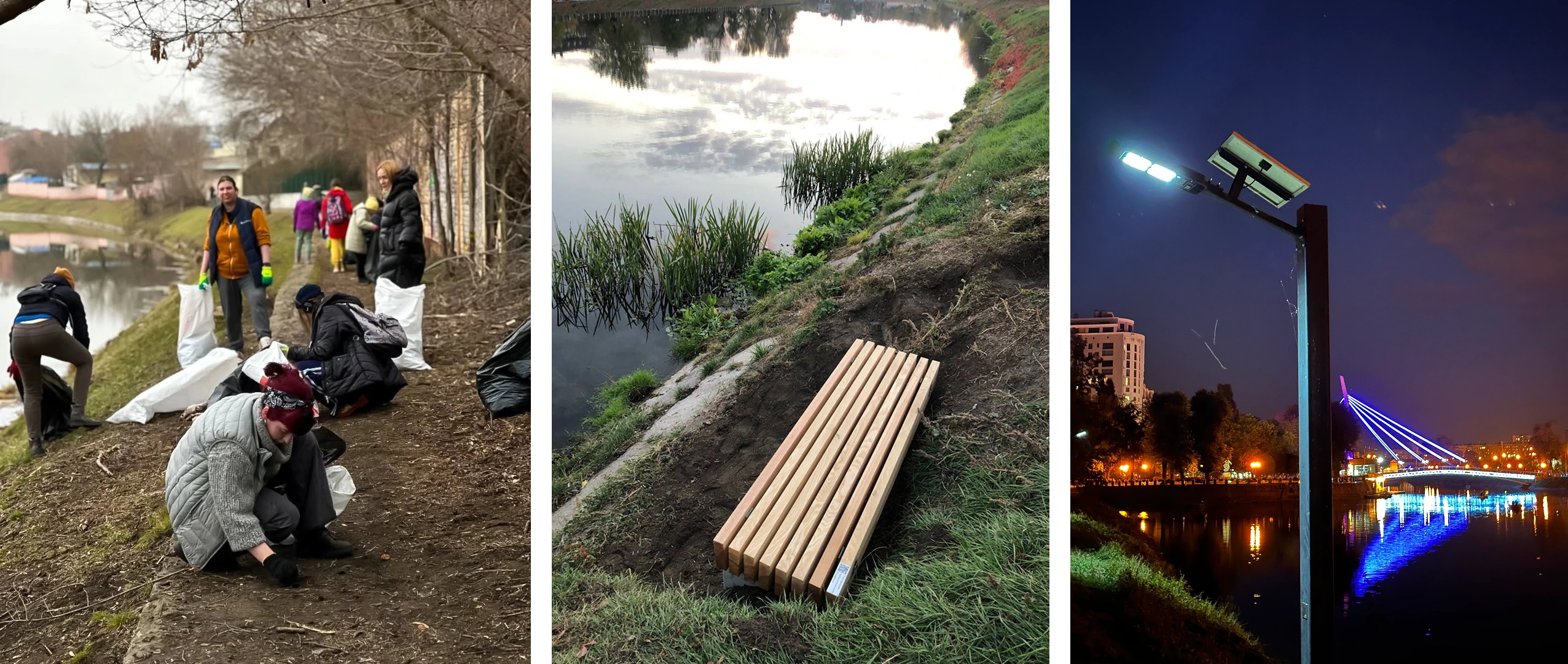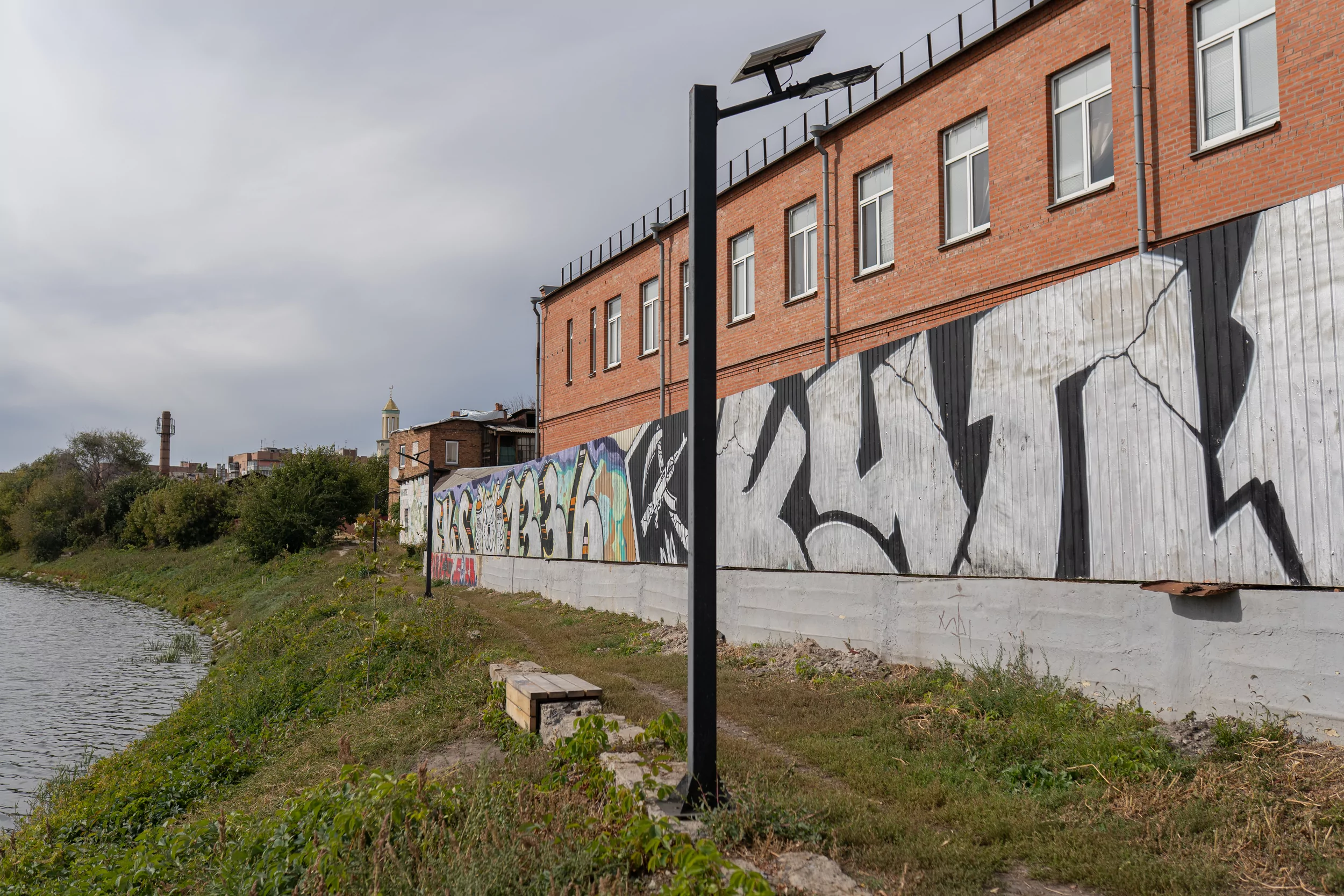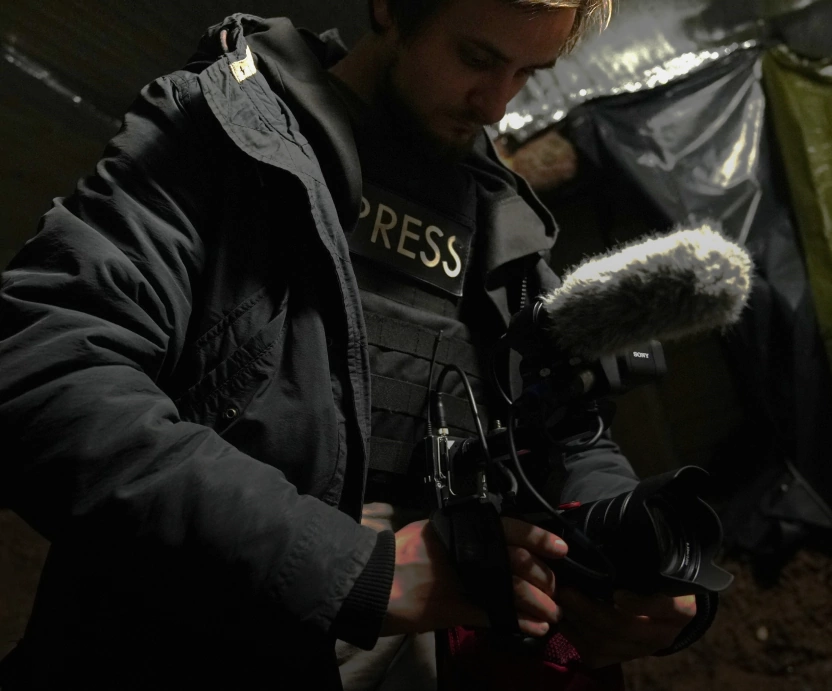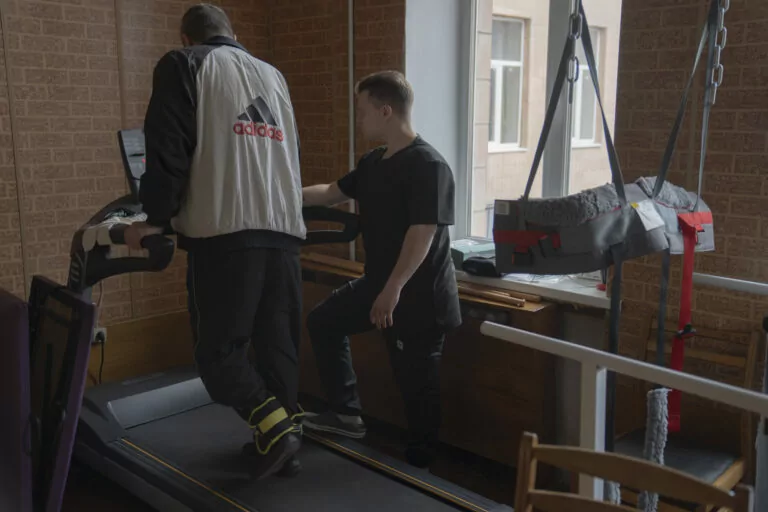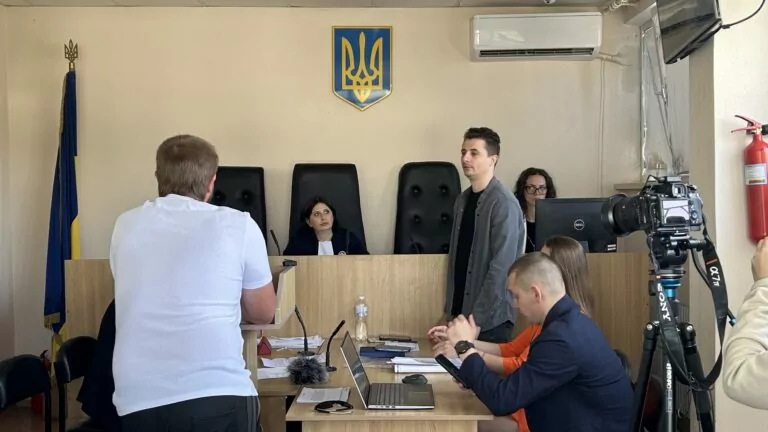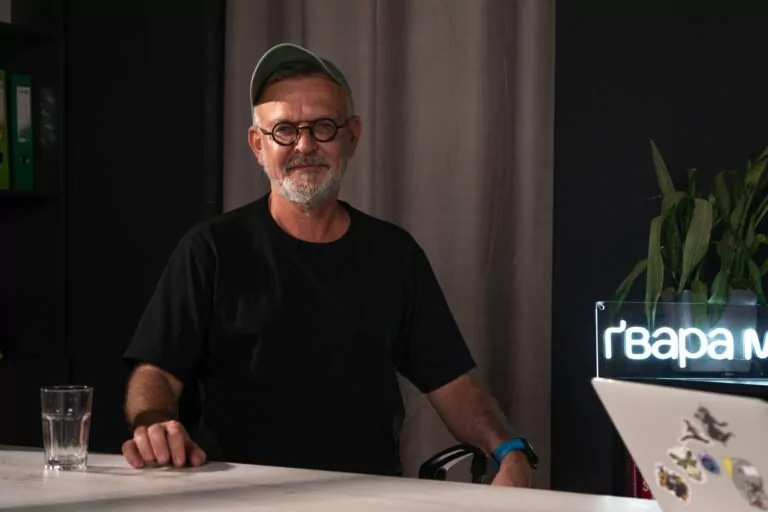KHARKIV — In Ukraine, abandoned spaces within cities are often created by Russian missiles or drone attacks — but not the one Olha Holubova decided to research and open.
Olha is an architect and urbanist, a graduate of one of the local colleges in Kharkiv. She started outlining Zaparkannya (which literally translates to “a place behind the fence”) as a student project after discovering grant possibilities for sustainable development.
The research began with an exploration of city areas that were devoid of people, urban voids. Olha couldn’t leave it at this stage. She started looking for ways to realize it and joined the Platform for Urban Development, a local NGO.
She understood the need to bring the community together to test the format she had in mind. Olha says, “Many people were interested — we’d all been searching for these common points of intersection, for ways to influence our environment positively.”
The research group has taken on the Kharkiv neighbourhood of Zalopan in the Kholodonohirskyi district, located near the city center and full of small-scale historic buildings.
Their goal: to reopen the river and take down the barrier between the shore and the city.
Zaparkannya’s first toloka (a traditional Ukrainian form of communal labor — ed.) gathered nearly 50 participants — locals from the neighbourhood and city’s activists. They were working to clean the embankment of the Lopan, one of the rivers that flows through the city, and install the benches on the shores. Then, activists invited people to workshops and lectures about urbanism and the district’s history.
“To the tolokas, people have been coming with their own materials, gloves, and trash bags. Those who worked with their hands said that they feel better doing the physical work. It mentally consolidates us,” Olha says.
Beyond old barriers
Zaparkannya highly contrasts with the Soviet recreational planning of the Strilka park across the river.
In his book Building and Dwelling: Ethics for the City, American sociologist Richard Sennett argues that urban spaces are created to compel people to act in a specific way — “the built environment can alter the social interactions in daily life”. For instance, some spaces can be crafted to stop people from dwelling around and exploring the cityscape.
This idea correlates with Soviet recreational planning, where riverside embankments, fenced parks, and regimented leisure zones were engineered to choreograph how people move and rest, discouraging informal contact with nature or spontaneous use of space.
Strilka can be called a post-colonial legacy in planning, where concrete pathways and fences conspire to keep people away from the water. Throughout the Kharkiv river shores, most of what you can take from looking at them is thickets. Examples like these are found throughout Ukraine — in Kyiv, the Dnipro River is surrounded by concrete, with barely any access to the water.
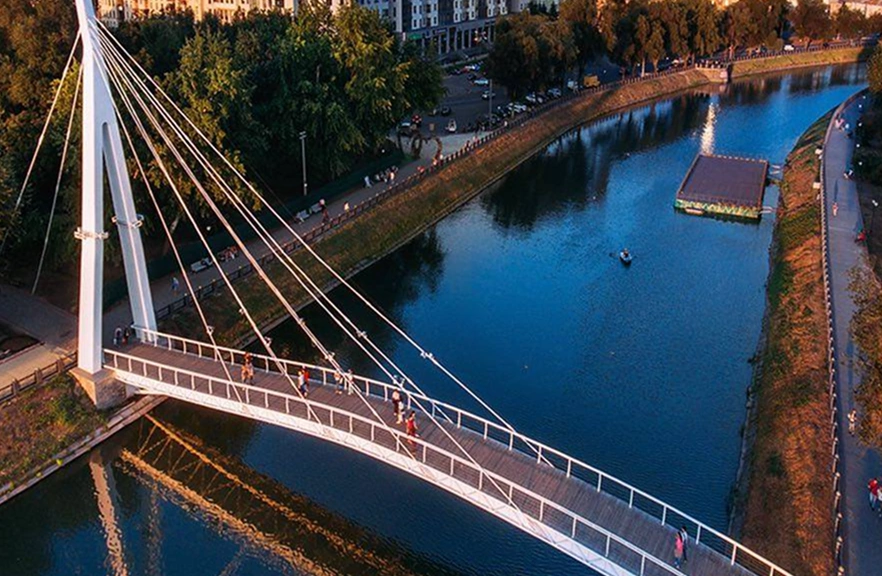
European environmental activists in the 1970s wanted urban planning to consider ecology, public spaces, and local needs rather than big infrastructural visions. European Planning History in the 20th Century explains: environmentalists saw postwar modernism as a ‘wasteland urban culture’ that cut people off from nature and community. This wasn’t the case for the Soviet Union.
Right to the city
Zaparkannya was just thickets and reeds near the shore, too, before activists took it.
Now they’re taking a modern tactical urbanism approach: low-cost, high-impact for the community.
“All the time I see people sitting on our benches, those who helped and just flaneurs. It is a place of solitude in our storming times. An entrance to the river is no longer just a dead end or a landfill, but a wanderer’s culmination,” Olha says. As the project continued, the local community became much more active and appreciative of the space near the river, which, Olha believes, should be in absolute access. “It is right to the city, the right for the people to have a way to the river.”
Zaparkannya functions thanks to a horizontal network of people, a few experts, the local community, and a modest budget from small grants and the Swedish Institute.
“We have put streetlights and a couple of benches. With minimal effort, we had about five tolokas. We did all of this independently. For us, it’s not about profit. It’s about doing something meaningful.”
When Zaparkannya looked for contractors who could make street lights, they completed the work in one week. Olha didn’t expect that, during wartime, Kharkiv craftspeople could work that fast. When street lights were installed, people living in the neighbourhood provided them with electricity.
Exciting plans for uncertain future
Challenges remain — many active people have left Kharkiv since Russia’s full-scale invasion. “There are not enough people for all the ideas we want to embody, and acquiring resources for substantial projects is hard. We are thinking strategically, but acting tactically because we still don’t know what will happen tomorrow,” Olha says.
After a long pause since 2016, this year, Kharkiv once again participated in European Mobility Week. One of the main streets, Rymarska, has been converted into a car-free space for the weekends. It might seem like the city administration helps and joins the new initiatives, but Olha says that they would rather not interfere with what local activists are doing and maintain a neutral position.
Zaparkannya has exciting plans for the future. Currently, they are looking for partners to create a bicycle path and a paved sidewalk near Lopan. They have already presented their project at the Ukrainian Urban Forum. Olha’s wish is to build a network of green river initiatives—bringing together other activists and NGOs working on Kharkiv’s rivers under a shared framework.
Such a framework can help renew the nature preservation efforts across rivers in Kharkiv oblast that have been suspended since the start of Russia’s full-scale invasion.
Author: Matvii Suminov
Cover photo: One of Zaparkannya’s tolokas / Source: Olha Holubova’s archive
Thank you for reading this article and keeping an eye on things that are happening in Kharkiv amidst (and despite) Russia’s war on Ukraine. Please, consider also buying us a coffee or subscribing long-term to BMC to keep our Kharkiv-based newsroom going.
Read more
- Marking minds on city walls — Inside Kharkiv street art festival
- Autumn Pride in frontline region: Three days with queer community in Kharkiv

